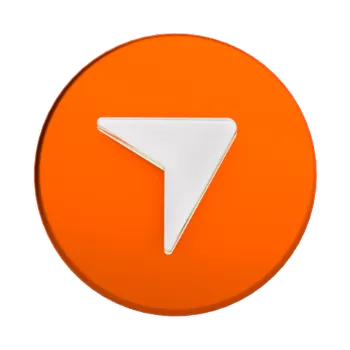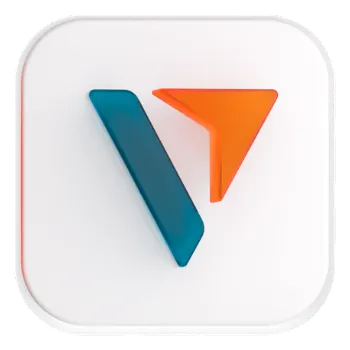Among the many various trading instruments available to investors, futures stand out for their ability to offer a different way to trade familiar markets and bring about desired outcomes.
While they can be beneficial, futures require more advanced knowledge to properly utilise. As such, they are popular among advanced investors and traders seeking alternative trades to help protect their positions.
Here’s an introductory guide on what futures are, how they work, and the basics of trading them.
What is a futures contract and how does it work? [1]
A futures contract is an agreement between two parties to trade an asset at a pre-agreed price on a predetermined date.
Futures are traded via agreements between buyer and seller. The basis of a futures trade is the futures contract, which allows its participants to buy or sell a specific underlying asset at a preset price on a set future date.
The underlying asset can be a commodity, a security, or some other financial instrument – the only requirement is for both buyer and seller to agree upon the asset.
The more savvy of you might have already guessed at the core benefit that a futures contract provides. Because the trading price can be predetermined, this allows traders to hedge against price volatility in the market.
Of course, it is impossible to predict what the price of an asset would be at any given moment (this is known as the spot price), which means setting a price that is too high or too low will be disadvantageous. But by the same token, getting it right will also produce profits on your trade; we’ll discuss the mechanics of futures trading in greater detail later on.
Futures contract specifications
It’s important to be familiar with the components of a futures contract before you attempt to trade them. Here are the key elements of a futures contract.
Contract size
This describes the deliverable quantity of the underlying asset. In futures contract sizes are fixed, but they can be different for different assets. For instance, one crude oil futures contract represents 1,000 barrels; and one contract of gold futures represents 100 troy ounces.
For indices, contract sizes are determined by multiplying the index’s reading by a dollar value. Some examples are the E-mini S&P 500 futures, which represent $50 times the price of the S&P 500 Index. And the Micro E-mini S&P futures, which represent $5 times the price of the S&P 500.
Contract value
The value of a futures contract is derived by multiplying the price of the underlying asset by the contract size. For example, if you hold one contract of the E-mini S&P 500, and the index is trading at 5,200, the value of the contract is $50 x 5,200 = $260.000.
Contract value is also known as the contract’s notional value.
Tick size [2]
Tick size refers to the minimum price changes in a futures contract. They are defined by the exchange on which the futures contract is traded, and vary depending on the size of the underlying asset.
As an example, the tick size of an E-Mini S&P 500 Futures Contract is equal to one quarter of an index point. Since one index point is valued at $50, this means a movement of one tick is 0.25 x $50 = $12.50.
Meanwhile, the tick size of the NYMEX WTI Crude Oil contract is equal to 1 cent. As each contract of WTI Crude is 1,000 barrels, this means one tick is equal to $10.
Exchanges set tick sizes as a means to facilitate trading by providing optimal liquidity and fostering tight bid-ask spreads.
Delivery
Futures contracts have an expiry date, upon which delivery of the underlying asset at the agreed-upon price and quantity is performed.
To avoid taking delivery, traders should close their positions or roll over their futures contract to a later date.
Why trade futures contracts
Diversification
It’s no exaggeration that futures contracts are among the most varied and wide ranging instruments, covering everything from major commodities to stocks, bonds, and even indices.
Some examples of futures contracts include [3]:
- Commodity futures (commodities such as crude oil, natural gas, corn, and farmland)
- Currency futures (encompassing major currencies such as the euro and the British pound)
- Energy futures (underlying assets include crude oil, natural gas, gasoline, and heating oil)
- Equities futures (stocks and equity funds traded on the market)
- Interest rate futures (used to hedge against interest rate changes in Treasurys and other bonds, which are affected by monetary policy changes)
- Precious metal futures (eg. gold, silver, palladium, etc.)
- Stock index futures (using indices such as the S&P 500 as underlying assets)
Given this wide selection, a futures trader can conveniently and effectively diversify their portfolio by choosing appropriate positions. On the flip side, knowing how to make the right choices in a sea of different assets would require a high degree of experience and knowledge, making this strategy more suited to advanced investors.
Hedging
The key benefit that futures contracts offer is the ability to hedge against future price volatility. This is possible because futures contracts lock in the price of the underlying asset ahead of time.
As such, futures contracts allow traders to protect unrealised profits or minimise potential losses. Additionally, with the wide range of futures contracts available, savvy investors can make use of them to cost-effectively hedge against broader market movements or volatility in specific sectors.
Leverage
Futures contracts are traded on leverage with margin, allowing investors to control larger positions with smaller capital. This frees up capital to be deployed in other trades simultaneously, allowing greater capital efficiency. With leverage, a futures trader is able to take advantage of more market opportunities.
Conversely, leverage will also amplify a losing position, so traders should be aware of this possibility and make suitable adjustments. It’s essential to practise proper risk management such as position sizing, meeting margin calls and making use of stop-losses.
After-hours trading
Unlike traditional stocks, futures contracts can be traded virtually around the clock, with trading hours available even on the weekends. This allows savvy investors to open futures trades to potentially capture upcoming market events.
For instance, let’s say that several tech giants have reported better-than-expected earnings after the market closed. A futures trader may go long on a futures contract for the NASDAQ 100 to potentially capture an upswing in the index.
Pros and cons of futures trading
| Pros | Cons |
| Capital efficiency via leverage | Leverage can be risky if used carelessly |
| Potential for diversification | Requires knowledge and experience to achieve proper diversification |
| Can use futures to effectively hedge against market volatility | Futures contracts are inherently complex and is best reserved for advanced traders |
| Can trade round the clock to benefit from after-hours trading | Futures have expiry dates that must be managed. Failing to close or roll forward a contract will result in physical delivery of the underlying asset. |
How to trade futures? [4]
Long, short or spread
In essence, there are three ways that a futures contract may be traded – you can go long, short, or trade the spread. This flexibility is also a main reason why futures contracts are popular among seasoned investors.
Going long on futures contracts
This simply means to buy a futures contract, and profit when the price of the underlying asset rises.
Remember that the value of a futures contract is based on the price of the underlying asset, so a long futures contract increases in worth as the asset’s price goes up.
Going short on futures contracts
When going short on a futures contract, this simply means to sell the contract, and profit when the price of the asset goes down.
To illustrate, assuming you want to go short on a futures contract. You first “borrow” the futures contract (rather, the underlying assets) from your broker and sell it at the current price, collecting S$1,000 as a result. When the underlying asset falls in price, the value of the contract then drops to $700.
At this point, you buy the contract back at $700 to “return” the underlying assets to your broker, allowing you to pocket $300 in profit.
Trading the spread on futures contracts
This is a more advanced futures strategy that combines both buying and selling contracts at the same time.
To trade the spread, a futures investor would simultaneously buy different futures contracts. When the relative price difference between the two narrows or widens, the investor stands to gain a profit.
Trading the spread is highly versatile, as you can choose contracts with the same underlying assets but with different expiry dates, or choose two futures contracts in two closely-related products like crude oil and gasoline.
Trade popular futures contracts with Vantage CFDs
Another way to trade futures contracts is with Contracts-for-Differences (CFDS) which are another type of financial derivative that works similarly to futures contracts.
In a CFD, you are trading on the price difference of an underlying futures contract. This allows you to gain exposure to the futures market without having to deal in actual futures contracts.
Like futures, CFDs can be traded on leveraged, allowing greater capital efficiency. Furthermore, CFDs do not come with the risk of physical delivery, but allows you to potentially profit from price volatility in the futures market.
You can also trade CFDs a wide range of futures, ranging from equities to bonds, commodities, crypto and more – this helps you diversify your trades to cushion against adverse events in specific sectors or economic periods.
Trade the world’s most popular futures with Vantage CFDs, and enjoy low fees, tight spreads and transparent pricing. Enjoy the reliability and speed of our world-class trading platforms, including MT4 and MT5, and enrich your trading journey with our deep selection of blogs, guides and educational resources.
Sign up for a live account to start experiencing the Vantage advantage today!
References
- “The Investor’s Guide to Futures – Investopedia”. https://www.investopedia.com/articles/optioninvestor/09/get-started-with-futures.asp . Accessed 9 Nov 2024.
- “Tick Movements: Understanding How They Work – CME Group”. https://www.cmegroup.com/education/courses/introduction-to-futures/tick-movements-understanding-how-they-work.html . Accessed 9 Nov 2024.
- “What Is Futures Trading – Investopedia”. https://www.investopedia.com/terms/f/futures.asp . Accessed 9 Nov 2024.
- “How to Trade Futures: Platforms, Strategies, and Pros and Cons – Investopedia”. https://www.investopedia.com/how-to-trade-futures-5214571 . Accessed 9 Nov 2024.



